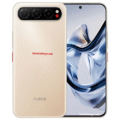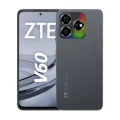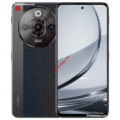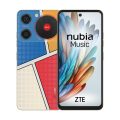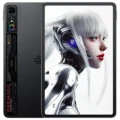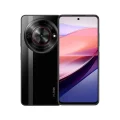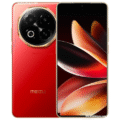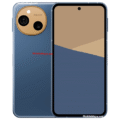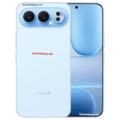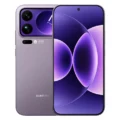Price List: Under Tk.5,000 | Tk.5001-10000 | Tk.10001-15000 | Tk.15001-20000 | Tk.20001-30000 | Tk.30001-40000 | More Mobiles
- Home
- All Mobile
- ZTE
- ZTE Blade V50
ZTE Blade V50
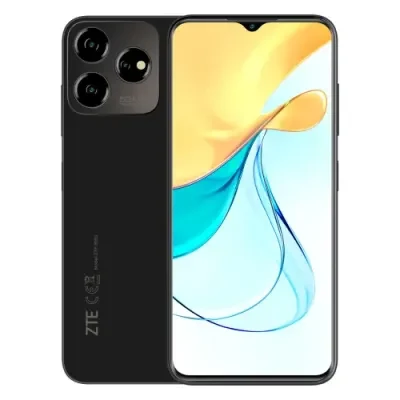


Specifications
Price in Bangladesh
| Expected Price | 28,000 |
General
| Device Type | Smartphone |
| Model | 7060 |
| Announced | September, 2025 |
| Released | September, 2025 |
| Status | Available |
Hardware & Software
| Operating System OS => Every computer system run on a base software called Operating System (OS). Operating System controls all basic operations of the computer (such as smartphone, PDAs, tablet computers and other handheld devices). The Operating System allows the user to install and run third party applications (apps), apps are used to add new functionality to the device. | Android |
| OS Version | v13 |
| Chipset Chipset is a group of integrated circuits designed to perform one or a more dedicated functions, often with real time computing constraints, Popular smartphones are equipped with more advanced embedded chipsets that can do many different tasks depending on their programming. | - |
| CPU CPU (Central Processing Unit) mostly known as processors, CPU processes instructions in order to carry out certain functions that make your device operate properly. Processors are often described as the brain of computers, smartphones and tablets, Smartphones and tablets rely on processors to carry out their every task, Processors are an incredibly important factor in selecting any type of computing device, including your smartphone. | Octa-core |
| GPU GPU (Graphics Processing Unit) is a single-chip processor designed to rapidly manipulate and alter memory to accelerate the creation of images in a frame buffer intended for output to a display, This includes things such as lighting effects, object transformations, and 3D motion. | - |
| RAM (Memory) RAM (Random Access Memory) is a type of computer memory that can be accessed randomly, any byte of memory can be accessed without touching the preceding bytes that allows information to be stored and accessed quickly from random locations. RAM is the most common type of memory found in computer systems, smartphones, tablets and other electronic devices. | 6 GB |
Design
| Dimensions | 161.9 x 72.8 x 8 mm (6.37 x 2.87 x 0.31 in) |
| Weight | 178 g (6.28 oz) |
| Colors |
Black, Blue, Mint |
Display
| Display Type Display Technology => A number of display technologies and types used in mobile phones => TFT (Thin Film Transistor), IPS (In-Place Switching), OLED (Organic Light Emitting Diode), AMOLED (Active-Matrix Organic Light-Emitting Diode), Super AMOLED (an even advanced version of AMOLED), Resistive Touchscreen (Resistive touchscreens contain two layer of conductive material with a very small gap between them which acts as a resistance), Capacitive Touchsceen (Capacitive touchscreen technology consists of a layer of glass coated with a transparent conductor) | AMOLED |
| Size | 6.67 inches, 107.4 cm2 (~91.1% screen-to-body ratio) |
| Resolution | 1080 x 2400 pixels, 20:9 ratio (~395 ppi density) |
| Refresh Rate | 120Hz |
| HDR 10 / HDR+ support |
Rear Camera
| Camera Setup | Triple |
| Main Camera | 50 MP |
| Second Camera | 2 MP |
| Third Camera | 2 MP |
| OIS | |
| Video | 1080p@30fps |
Front Camera
| Camera Setup | Single |
| Secondary |
16 MP, f/2.0, (wide) |
| Video | 1080p@30fps |
Battery
| Battery Type Battery Type => Cell phones run on various kinds of batteries depending on the manufacturer, phone size or shape and features. There are basically four types of cell phone batteries => Lithium Polymer, Lithium Ion, Nickel Metal Hydride and Nickel Cadmium. | Li-Ion (Lithium Ion) |
| Placement | Non-removable |
| Capacity Battery Capacity is a measure (typically in Amp-hr) of the charge stored by the battery, and is determined by the mass of active material contained in the battery. The battery capacity represents the maximum amount of energy that can be extracted from the battery under certain conditions. | 4800 mAh |
| Quick Charging | 33W wired |
Storage
| Storage Capacity | 256 GB |
| USB OTG |
Network
| 2G Network |
GSM 850 / 900 / 1800 / 1900 |
| 3G Network |
HSDPA 850 / 900 / 1900 / 2100 |
| 4G Network |
LTE |
| 5G Network |
SA/NSA |
| SIM SIM (Subscriber Identity Module) is a small card that contains mobile network subscriber's account information. This allows the phone using the card to attach to a mobile network. The SIM card is most commonly associated with GSM and UMTS mobile networks. Moving a SIM card from one phone to another allows a subscriber to switch mobile phones without having to contact their mobile network carrier. SIM cards can also be used by a phone to store limited amounts of data, such as phone numbers and text messages. | Standard SIM |
Data
| GPRS GPRS (General Packet Radio Service) is a packet oriented mobile data service on the 2G and 3G cellular communication system's global system for mobile communications (GSM), Generally, GPRS is used for the purpose of wireless data transfer, such as sharing pictures and videos or browsing the Internet via a mobile phone connection. | |
| EDGE EDGE (Enhanced Data GSM Environment) is a wireless network technology generally considered the next step in the 2G network offers data transfer rates up to four times faster than ordinary GSM networks, Generally, EDGE is used for the purpose of wireless data transfer, such as sharing pictures and videos or browsing the Internet via a mobile phone connection. | |
| Speed | HSPA, LTE, 5G |
| Web Browser Web Browser => a web browser is a software application used to locate, retrieve and display content on the World Wide Web, including Web pages, images, video and other files, The primary function of a web browser is to render HTML, the code used to design or markup webpages. | HTML5 |
Messaging
| SMS SMS (Short Messaging Service) is a text messaging service component of phone, Web, or mobile communication systems. It uses standardized communications protocols to allow mobile phone devices to exchange short text messages over the networks. | Yes |
| MMS MMS (Multimedia Messaging Service) is a standard way to send messages that include multimedia content (audio clips, video clips and images) to and from mobile phones over wireless networks using the WAP protocol. | |
| Email Email (Electronic Mail) is a system for receiving, sending, and storing electronic messages, Similar to a letter, email is text messages that may contain files, images, or other attachments sent via the internet to a recipient by using applications and software prograps. An email address is required to receive email, and that address is unique to the user. | Yes |
| IM IM (Instant Messaging) is an exchange of text messages through a software application, it enable you to create a kind of private chat room with another individual in order to communicate in real time over the Internet. | Yes |
Connectivity
| Bluetooth Bluetooth is a wireless communications technology for exchanging data between mobile phones, headsets, computers and other network devices over short distances without wires, Bluetooth technology was primarily designed to support simple wireless networking of personal consumer devices. | 5.2, A2DP, LE |
| Wi-fi Hotspot | |
| Infrared Infrared connectivity is an old wireless technology used to connect two electronic devices. It uses a beam of infrared light to transmit information and so requires direct line of sight and operates only at close range. | |
| USB | USB Type-C 2.0 |
| GPS GPS The Global Positioning System is a satellite-based radio navigation system, GPS permits users to determine their position, velocity and the time 24 hours a day, in all weather, anywhere in the world, In order to locate your position, your device or GPS receiver must have a clear view of the sky. | GPS |
| NFC NFC (Near field communication) is a set of standards for smartphones and similar devices to establish peer-to-peer radio communications with each other by touching them together or bringing them into proximity, usually no more than a few inches. |
Media
| FM Radio | Unspecified |
| Loudspeaker | Yes |
| 3.5mm Jack | No |
Sensors & Security
| Fingerprint Sensor |
More
| Made By | China |
Performance Tests
ZTE Blade V50 Price in Bangladesh
The ZTE Blade V50 is priced at ৳28,000 in Bangladesh for the 6GB RAM + 256GB storage variant. Positioned firmly in the mid-range category, this smartphone delivers a solid balance of modern design, capable performance, and a vibrant AMOLED display. With standout features like a 50MP triple rear camera, 120Hz refresh rate, and Android 13 out of the box, the Blade V50 offers great value for users looking for an all-rounder at an affordable price. It’s an ideal choice for those seeking stylish looks, decent gaming capability, and smooth everyday use.
ZTE Blade V50 Specifications
Display and Design
The ZTE Blade V50 sports a 6.67-inch AMOLED display with a crisp 1080 x 2400 resolution, ensuring vibrant colors and deep contrasts. With a 20:9 aspect ratio and ~395 PPI pixel density, visuals appear sharp and immersive. Its 120Hz refresh rate enhances smooth scrolling and responsive animations, especially for gamers and multimedia users.
In terms of design, the phone features a sleek profile with dimensions of 161.9 x 72.8 x 8 mm and a weight of just 178 grams, making it easy to hold and operate with one hand. It comes in three stylish colors: Black, Blue, and Mint, appealing to both minimalist and trendy users.
Performance and Processor
Under the hood, the ZTE Blade V50 runs on an Octa-core processor paired with 6GB of RAM, ensuring a smooth experience for multitasking, social media, and casual gaming. While the exact chipset and GPU details aren’t specified, its hardware setup is designed to handle day-to-day operations reliably.
The phone comes with 256GB of internal storage, which should be ample for apps, media, and documents. It also supports USB OTG, allowing external devices like flash drives for easy file transfer. Overall, the Blade V50 performs efficiently in standard usage scenarios, though it’s not tailored for high-end gaming.
Camera and Video
Photography is one of the highlights of the ZTE Blade V50. On the back, it features a triple camera system:
- 50MP primary sensor for high-resolution photos
- 2MP secondary sensor (likely for macro shots)
- 2MP depth sensor for portrait effects
Video recording maxes out at 1080p@30fps, which is decent for casual video capture. On the front, a 16MP selfie camera with an f/2.0 aperture ensures clear, detailed self-portraits and video calls.
While not a flagship-level setup, the Blade V50’s cameras are capable of delivering quality shots in good lighting, enhanced by AI features.
Battery and Charging
Powering the device is a 4800mAh Li-Ion battery, providing a full day of moderate use. The phone supports 33W wired fast charging, reducing downtime significantly.
Although there’s no mention of wireless charging, the fast wired support and efficient battery make it suitable for users on the go.
Connectivity and 5G Support
The ZTE Blade V50 comes with comprehensive network support, including:
- 2G/3G/4G LTE
- 5G SA/NSA bands for faster connectivity
It has dual SIM functionality and offers modern connectivity options such as:
- Bluetooth 5.2 with A2DP and LE support
- Wi-Fi hotspot capabilities
- USB Type-C 2.0 port
- GPS for navigation
Although NFC and FM radio are not confirmed, the essentials are well-covered for most users.
Additional Features
The Blade V50 runs on Android 13, offering improved privacy controls and smoother performance. It includes a side-mounted fingerprint sensor for quick and secure unlocking.
Other notable features:
- No 3.5mm headphone jack (wireless or USB-C audio preferred)
- Loudspeaker support for media playback
- Built-in sensors for daily functions and gaming
The phone is Made in China, reflecting ZTE’s consistent build quality in this segment.
Reason to Buy
Here are some compelling reasons to consider the ZTE Blade V50:
- 120Hz AMOLED Display for smoother visuals
- Large 256GB storage — ideal for media lovers
- 50MP Triple Rear Camera setup for versatile shooting
- Android 13 pre-installed for a modern user experience
- 33W fast charging to reduce downtime
- Stylish and lightweight design
Verdict
The ZTE Blade V50 is a well-rounded mid-range smartphone that blends style, functionality, and affordability. While it doesn’t aim for flagship-level performance, it nails the essentials — a stunning display, decent cameras, large storage, and fast charging — making it a smart buy for students, casual users, and professionals alike. Its clean design and 5G capability future-proof the phone for years to come, especially for users upgrading from an older device.
FAQ
Q: Does the ZTE Blade V50 support 5G?
A: Yes, it supports 5G (SA/NSA) networks for faster mobile data.
Q: Can I expand the storage with a microSD card?
A: The phone supports USB OTG, but microSD expansion is not officially confirmed.
Q: What is the battery capacity and charging speed?
A: It has a 4800mAh battery with 33W fast charging.
Q: Is the ZTE Blade V50 good for gaming?
A: With its 120Hz display and 6GB RAM, it handles casual gaming well, though it’s not designed for heavy gaming titles.
Q: Does it come with a headphone jack?
A: No, the ZTE Blade V50 does not have a 3.5mm headphone jack.
Q: Which Android version does it run?
A: It runs on Android 13 out of the box.
Q: Is there a fingerprint sensor?
A: Yes, it features a fingerprint sensor for added security.
User Reviews
Disclaimer Note
We do not guarantee that the information of this page is 100% accurate and up to date.


